Or: Why Flower Power and Clay Soil Don’t Mix – A Mole’s Tale of Moisture, Microcontrollers, and Minor Excavations
They say moles love the damp. That may be true out in the field, but when your living room starts feeling like a boggy marsh, it’s time to bring in the tech (and a shovel).
Now, I know rewetting peatlands is all the rage these days for climate protection – and rightly so! – but I don’t think my neighbor had that in mind when she started watering her flowerbeds. For four to five hours. Every day. For three weeks. On clay soil.
The result? A surprise indoor wetland, right beneath my feet.
Now, here in Claylandia (™), water doesn’t politely drain away. It lurks, seeps, and eventually invades. My cozy underworld was slowly turning into a bathtub. So what’s a Mole to do?
Step 1: Dig, Mole, Dig!
I excavated a modest pit: 50 cm deep, 30 cm wide, and 40 cm long. Right in the boiler room – or as I now call it, the technical spa. In went a sturdy basket, a submersible pump, and a sense of growing control.

Step 2: Enter the ESP32-S3
Because this is not just any molehill. I installed an ultrasonic sensor pointing down into the pit, connected to an ESP32-S3, prototyped it with ESPhome. This was crazy fast, just using seven lines of yaml code in ESPhome (not counting the boilerplate to connect the device)
sensor:
- platform: ultrasonic
id: drain_distance
trigger_pin: 9
echo_pin: 8
name: "Drain Water Distance"
update_interval: 10s
With a powerbank lifetime of just 2-3 days, just after one week this drove me nervous. So I started over running PlatformIO, speaking fluent BTHome (on Home Assistant Integration). The sensor continuously monitors the distance to the water surface – precision mole tech!
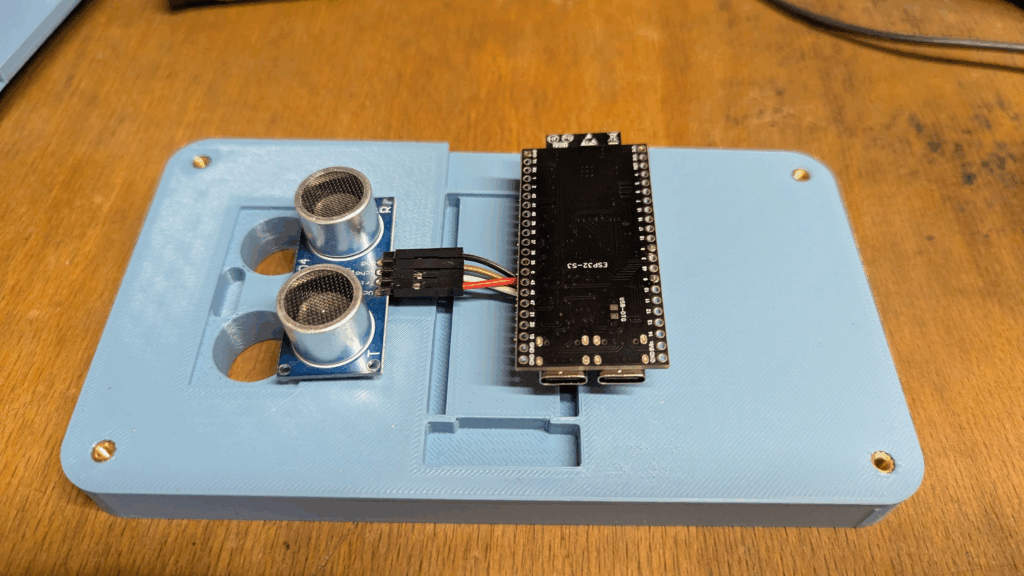

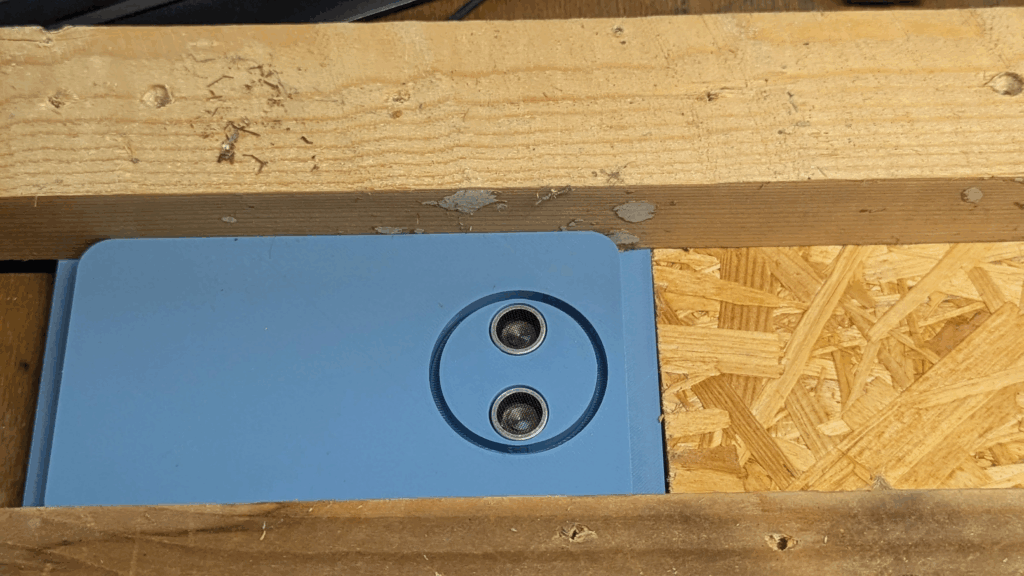
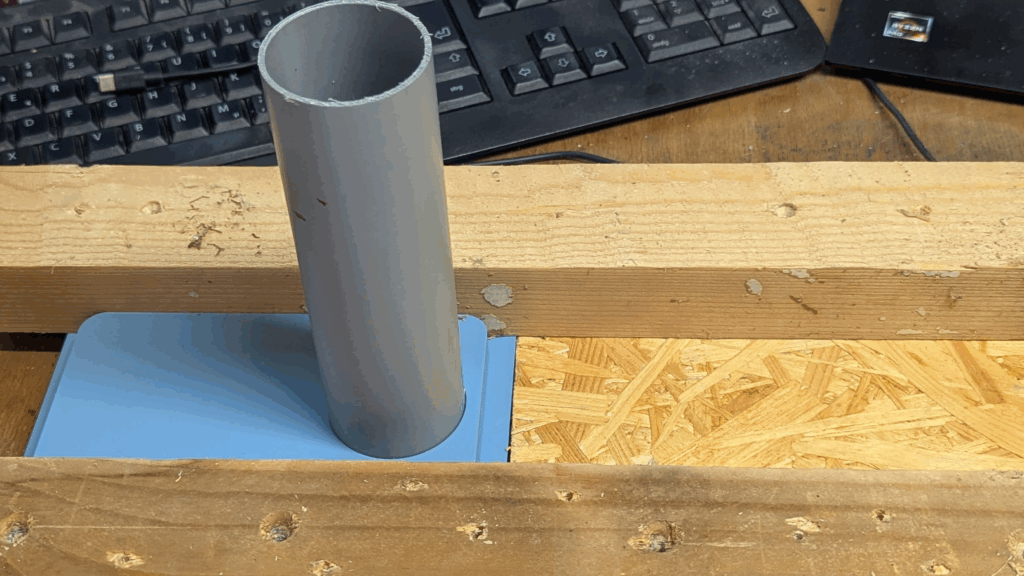
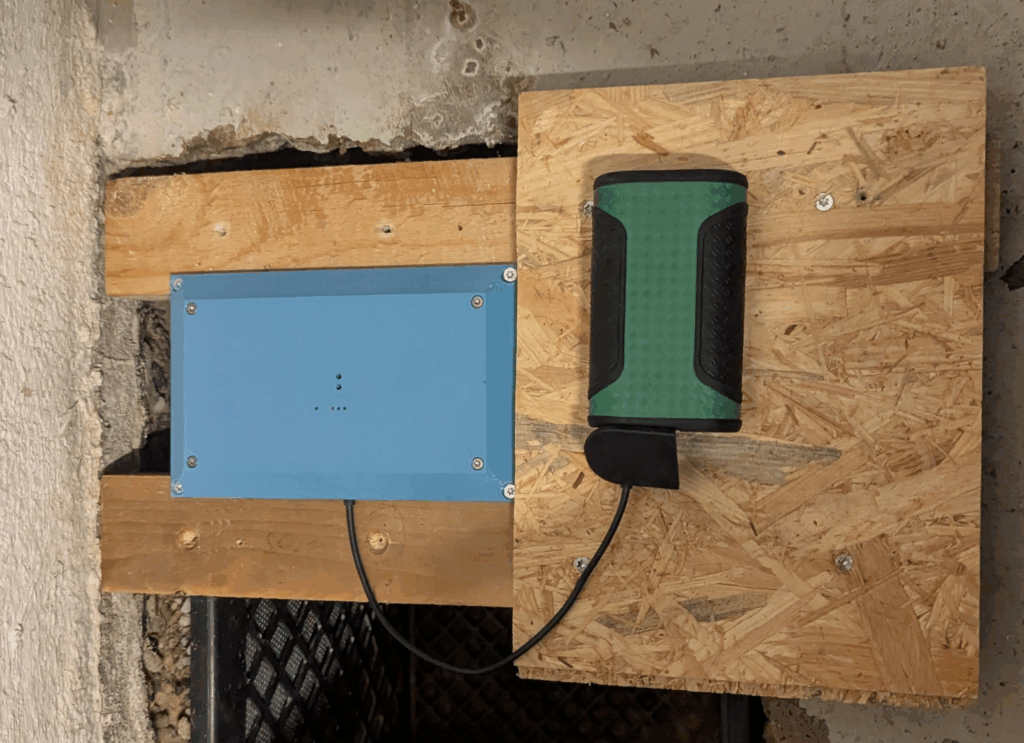
All code and 3D-Model files can be found on Github: the78mole/BThome-US-Ranging
Step 3: Integration is Everything
The ESP32 reports directly to my Home Assistant setup. The only thing neeed is a bluetooth proxy device somewhere around in your house, that can fetch the messages out of thin air. You can use a ESPhome device for that purpose or one of the supported Shellys (many Pro and Plus devices support this).
The data shows up alongside the usual suspects: temperature, humidity, battery level… and now aquatic threat level. I’ve even added an automation to send a Pushover alert if the water rises above a critical value (25 cm blow floor level). That means I can take action before my sofa learns to swim.
Step 4: Make it Pretty
To keep things neat and paw-safe, as you can see in the above pictures, I designed and 3D-printed custom enclosure, flush-mounted into a cover plate. It hides the pit, protects the electronics, and keeps the place from looking like a science experiment gone wrong.
Step 5: Protection for the Blind Underground Folk
Now, we all know that the subterranean world is full of hazards — unexpected floods, loose cables, and curious creatures with paws. But it’s not just about electronics and moisture: sometimes, it’s about safety and aesthetics.
To ensure that no mice, hedgehogs (or worse: moles) stumble into my sensor-pit of doom, I welded a sturdy steel frame from plain black steel. This angular monument to overengineering got lovingly embedded into the screed with mortar, just like grandma used to do.
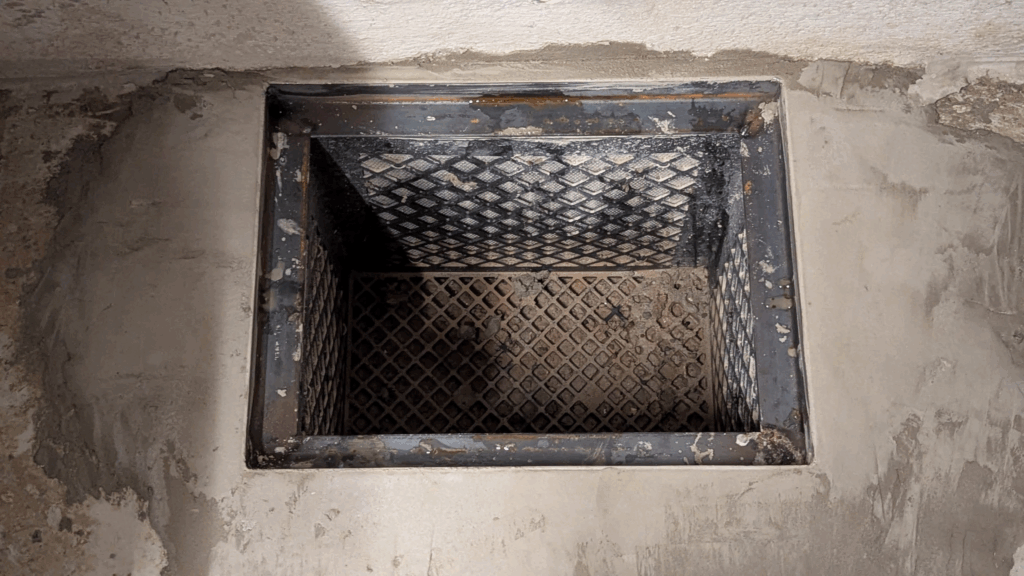
Inside the frame sits a robust two-layered phenolic resin board (some call it “Siebdruckplatte”, I call it waterproof magic), precisely cut to host the ultrasonic sensor housing. The whole thing is flush with the floor (not now, but when I added plates to the floor after kicking out the fossil burning stove), strong enough to survive stampedes, and still allows perfect measurements.

Functionally invisible. Structurally paranoid. Just how we like it in the underworld.
Conclusion
What started as an accidental water feature is now a smart, almost invisible early-warning system. And all thanks to a bit of digging, some ESP-wrangling, and the desire not to grow mold in my moldings. Additionly, I had a lot of fun welding the frame myself at ZAM 🙂
Moral of the story? Always check what your neighbors are watering – and never underestimate clay soil.
Stay dry,
The Mole
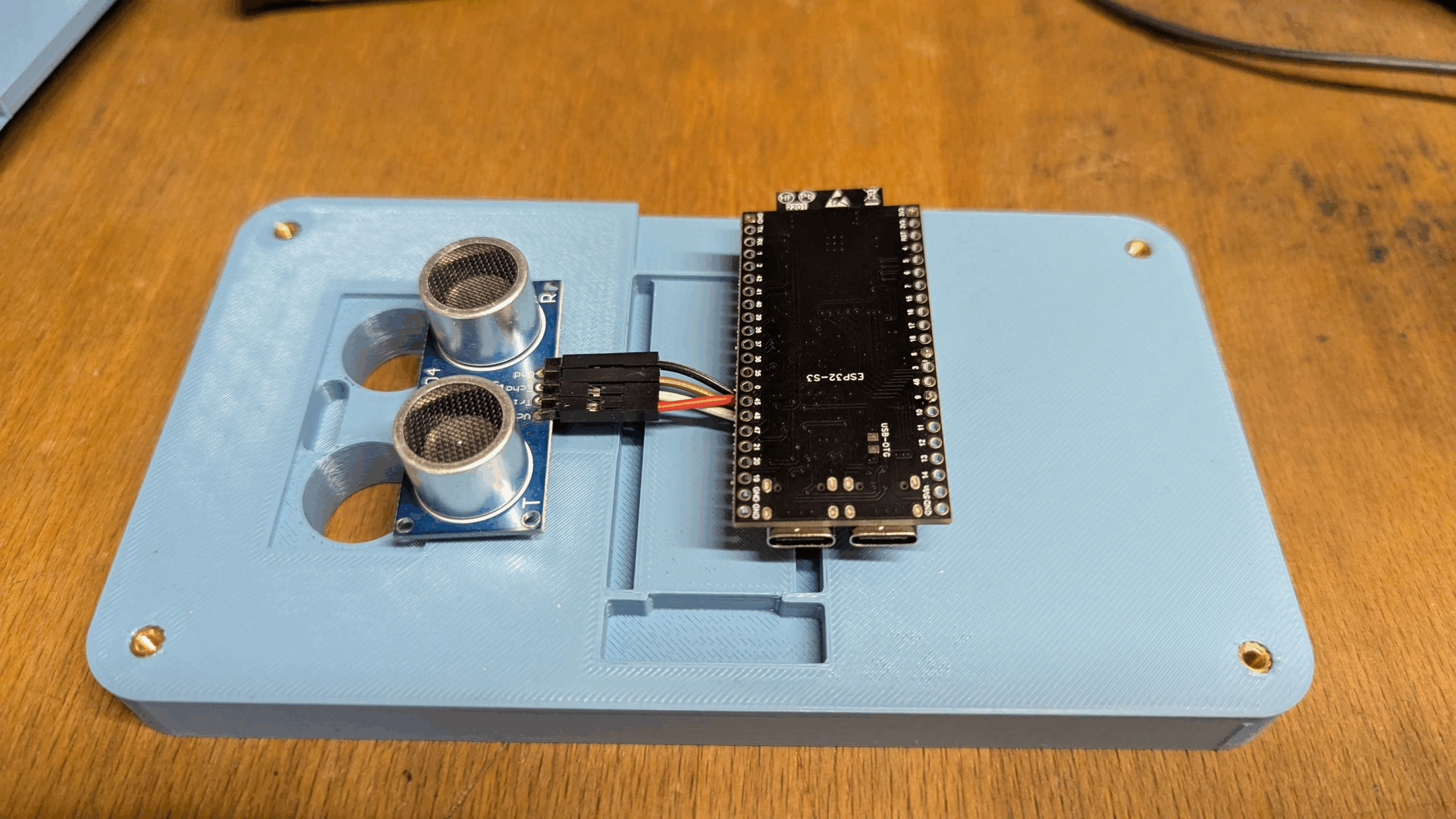
Schreibe einen Kommentar